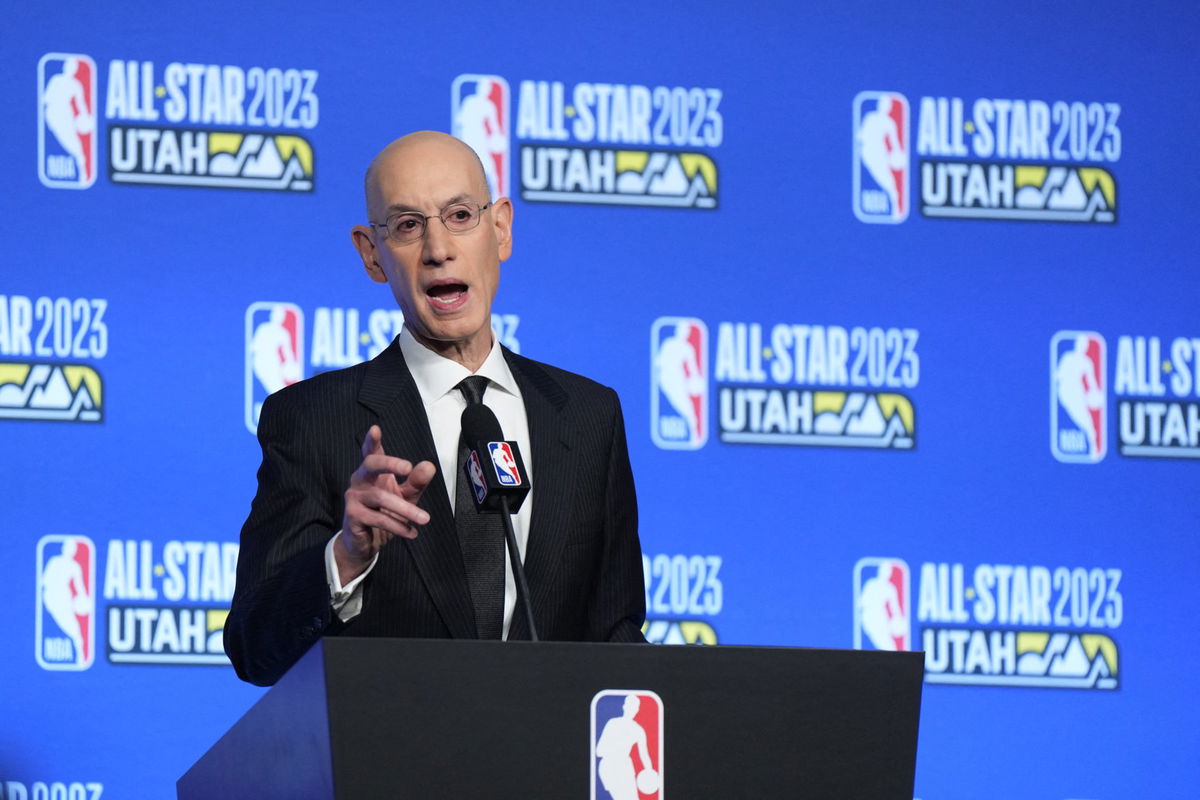
USA Today via Reuters
Feb 18, 2023; Salt Lake City, UT, USA; NBA commissioner Adam Silver speaks in a press conference during the 2023 All Star Saturday Night at Vivint Arena. Mandatory Credit: Kirby Lee-USA TODAY Sports

USA Today via Reuters
Feb 18, 2023; Salt Lake City, UT, USA; NBA commissioner Adam Silver speaks in a press conference during the 2023 All Star Saturday Night at Vivint Arena. Mandatory Credit: Kirby Lee-USA TODAY Sports
During a conference held last month, Joe Dumars, the NBA’s executive vice president of basketball operations, concluded that there is no evident correlation between load management and fewer injuries. To back his statements, the league conducted a comprehensive study, collecting data from 150 players per season over the past decade (2014–23).
Watch What’s Trending Now!
The recent report declares that, based on this extensive analysis of league-wide injury and participation data, adopting load management strategies by missing regular-season games has not been shown to reduce the risk of future injuries for NBA players. Additionally, the report dispels the notion that schedule density, including playing back-to-back games, increases players’ susceptibility to injuries. Furthermore, it emphasizes that cumulative game load, i.e., playing a substantial number of minutes, does not influence future injury rates.
This marks a stark departure from the perspective held by Adam Silver and the league until the All-Star weekend last year. Dr. Nirav Pandya, an injury analyst, has contested the league’s recent assertions. In response to a tweet, he replied, “Would be interested to see the report/data analysis released publicly by the #NBA so that those of us who do research in this area can look at their methodology. It does run counter to what has been published in scientific journals.”
ADVERTISEMENT
Would be interested to see the report / data analysis released publicly by the #NBA so that those of us who do research in this area can look at their methodology. It does run counter to what has been published in scientific journals. https://t.co/LUroWi9CBb
— Dr. Nirav Pandya, M.D. (@DrNiravPandya) January 14, 2024
In 2021, Dr. Nirav Pandya conducted a study to investigate the correlation between increased workload and significant injuries among NBA players. Using statistics from 34 NBA players who experienced substantial in-game injuries during the 2016–2019 seasons, resulting in them missing at least ten consecutive games, his research revealed a direct connection between elevated minutes played per game over the cumulative one, three, five, and ten games preceding the injuries and an increased occurrence of injuries. The Associate Professor of UCSF Orthopedic Surgery suggests that an effective strategy to mitigate injuries would be to maintain players’ minutes played per game consistently over time.
ADVERTISEMENT
Adam Silver backtracks on his initial load management claims
It is the same sentiment Adam Silver echoed during his annual All-Star Weekend press conference when he said that “there is real medical data and scientific data” to support the league’s current practice of load management, and he didn’t think that the league’s biggest stars are missing too many games. However, his views have changed since then, as highlighted by the new Player Participation Policy.
Read More: Is the NBA’s New Resting Policy Going to Have an Effect on Preseason Games?
ADVERTISEMENT
In September, the league implemented a new PPP to encourage greater player participation. The trend of star players missing games has experienced a significant surge in the past five decades: 17.5 (2010s), 13.9 (2000s), 10.6 (1990s), and 10.4 (1980s), compared to 23.9 (2020s). Notably, the number of single-game absences has quintupled as teams aim to rest players for postseason freshness. This practice began affecting fans and ratings of nationally televised games, prompting the league to implement stricter measures.
Top Stories
WNBPA VP Breanna Stewart Takes CBA Extension off the Table As Deadline Looms

Why Was Bulls vs Heat Delayed? Climate Change Keeps A’ja Wilson and Fans Waiting at United Center

Is Victor Wembanyama Dating Khloe Kardashian? Fact-Checking Viral Post About Spurs Star

Michael Jordan’s Bulls Teammate, Basketball Leagues Founder Dies at 68

Zion Williamson’s Alleged Baby Mama Drops Money Transaction Proof, Dragging NBA Star Back in Spotlight

Watch This Story: Having Snubbed LeBron James, Luka Doncic Gets Rewarded by Michael Jordan’s $150,000,000 NASCAR Team for His Loyalty
ADVERTISEMENT
ADVERTISEMENT
ADVERTISEMENT

